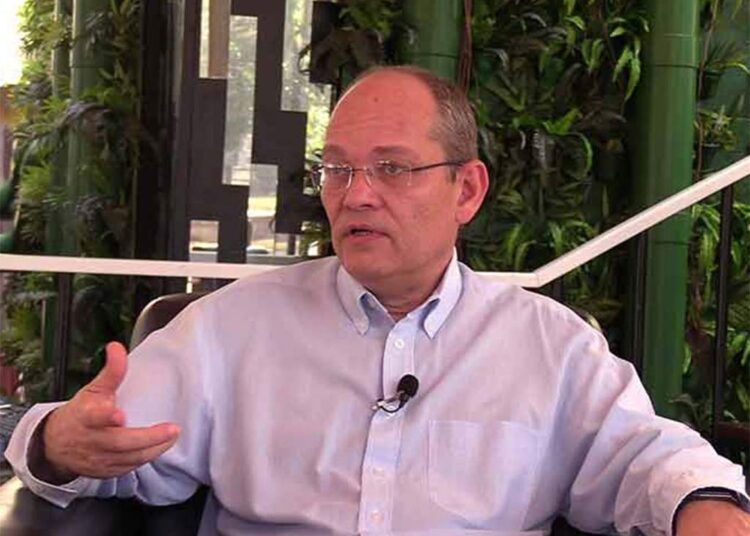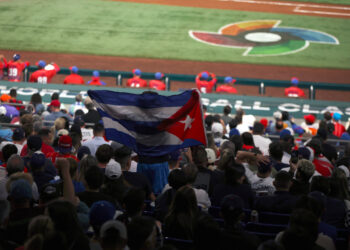Cuban scientists hope to have a dengue vaccine in the clinical studies phase within a year, announced Gerardo Guillén Nieto, director of Biomedical Research at the Center for Genetic Engineering and Biotechnology (CIGB) in Havana.
Phase I refers to the first introduction of an experimental vaccine into a human population to initially determine its safety and biological effects, including immunogenicity.
This phase may include dosage and means of administration and generally involves fewer than 100 volunteers.
In statements to Prensa Latina news agency, Guillén Nieto affirmed that the vaccine project to combat dengue is a priority within the CIGB development portfolio.
“We are working intensely on a novel vaccine, which is different from others,” added the Doctor in Biological Sciences and Master in Chemistry.
Regarding its marketing prospects, he explained that “there is only one dengue vaccine on the market at this time, but it has its limitations.”
This is Dengvaxia, developed by the French pharmaceutical company Sanofi, which is recommended to prevent the disease in children aged 9 to 16 years who have had a previous dengue virus infection confirmed by a laboratory, and who live in areas where dengue is common.
The other vaccine is Qdenga, from the Japanese pharmaceutical company Takeda, already distributed to three million Brazilians.
One of PAHO’s recommendations for Qdenga vaccination strategies is that it be administered “one to two years before the age-specific peak incidence” of more dengue hospitalizations.
“Our strategy avoids those limitations that other vaccine strategies carried out in the world have,” argued the Cuban researcher.
According to Guillén Nieto, author or co-author of more than 200 publications in international journals and more than 50 patents, “at this time we are completing clinical studies that confirm the proof of concept and the strategy that we had outlined, which is aimed at enhancing the cellular response.”
On the other hand, the scientist affirmed that “at this moment, Heberprot-P (to treat diabetic foot ulcers) is a leading CIGB product after the COVID-19 Abdala vaccine.
Abdala, whose name refers to the epic poem of the same name by José Martí, published in 1869, has had an important relevance not only in the control of the epidemic in Cuba, “but it has also been exported to several countries, also being an innovative product with patents,” Guillén Nieto stressed.
Dengue in Cuba
Every year Cuba is affected by diseases transmitted by the Aedes aegypti mosquito, such as dengue, Zika and chikungunya, therefore the scientific contribution to the treatment of these diseases is capital for the country and the region, in addition to the economic and commercial aspect of the medical product’s result, Prensa Latina reported.
The presence of dengue in Cuba was first confirmed in 1943, although it may have been the cause of an epidemic in 1902.
According to statistics from the Pan American Health Organization, from 2014 to date Cuba has reported in two years numbers that exceed 3,000: 2019, with 3,259 infections and the circulation of two strains of the disease; and in 2022, with 3,036 patients and the confirmation, for the first time, of the four serotypes of dengue in the national territory.
These figures would eventually be much larger, since there is a proliferation of infected people who do not go to health centers to notify their condition, despite media campaigns in favor of responsible behavior.
The worst of epidemics (1981)
At the end of May 1981, a dengue epidemic occurred explosively with a daily average of 9,447 cases.
In just over four months, the identified patients reached 344,203. In total, 158 fatal cases were known, whose ages ranged from 3 days to 80 years.
In fatal and serious cases, both in children and adults, diseases of genetic origin such as asthma, diabetes and sickle cell anemia were identified as risk factors.
Currently, about half of the world’s population is at risk of contracting it. Between 100 and 400 million infections occur each year.
Dengue occurs in tropical and subtropical climates throughout the planet, especially in urban and semi-urban areas.
In Latin America and the Caribbean, the main vector responsible for transmission is the Aedes aegypti mosquito.










